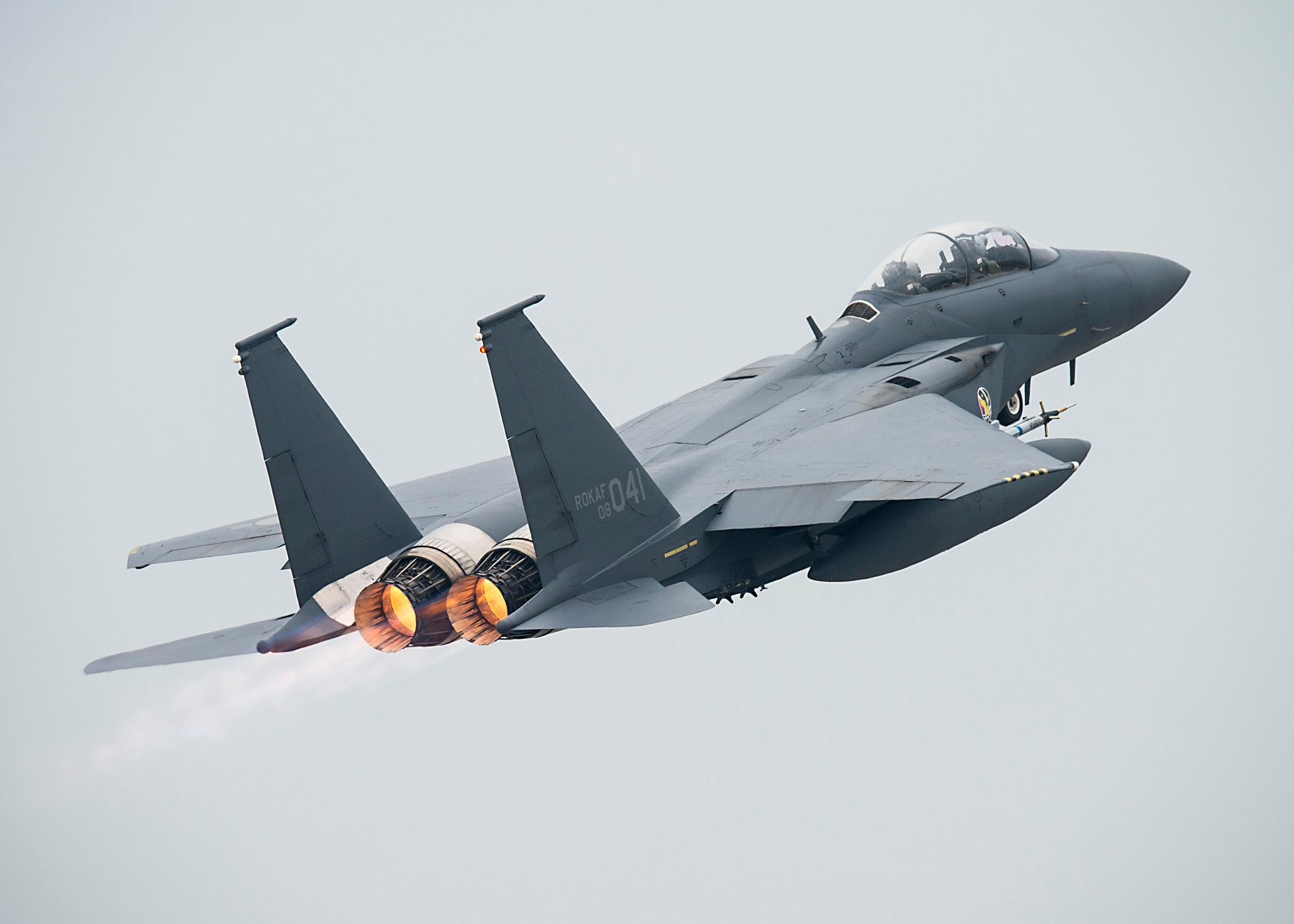On November 2, the South Korean military stated that its fighter aircraft launched three precision-guided air-to-surface missiles (ASM) in response to missiles fired by North Korea.
In a statement, the South Korean military said that its Air Force’s F-15K and KF-16 jets fired missiles into waters “near the Northern Limit Line (NLL) at a distance corresponding to the area where the North Korean missile struck.”
According to the South Korean military, the exercise demonstrated that Seoul will react “sternly to any provocations.”
Earlier in the day, Pyongyang launched nearly 23 missiles, the most it had launched in a single day, including one that landed less than 40 miles off South Korea’s coast. South Korean President Yoon Suk-yeol said it was effectively “a territorial invasion by a missile.”
The incident marked the first time a North Korean missile passed through the NLL since the end of the 1950–1953 Korean War. South Korea condemned North Korea’s missile launches, calling them “intolerable.”
The South Korean President called a meeting of the National Security Council and criticized the “unprecedented” launches. Firing a missile south of the NLL was “tantamount to territorial intrusion,” he said in a statement issued after the NSC meeting.
In the last few months, North Korea has conducted several missile tests, including one missile that recently soared over Japan. These tests spurred the United States and South Korean militaries to work closely together and run a series of major drills.

Nevertheless, the latest North Korean missile launches came only a few hours after Pyongyang demanded that the United States and South Korea stop large-scale military exercises, warning that it would no longer tolerate such military rashness and provocation.
According to the officials from Seoul and Washington, North Korea is now technically ready to test a nuclear weapon for the first time since 2017.
Meanwhile, the missiles fired by the South Korean fighter jets are reported to be AGM-84H/K Slam-ER ASM. South Korea launched three missiles from its F-15K Slam Eagle and KF-16 fighters. These fighter jets are widely considered the backbone of the country’s air force.
The Slam Eagles, modified versions of the F-15E Strike Eagle fighter used by the US Air Force, have upgraded sensors and electronic warfare systems.
On the other hand, the KF-16 fighter jet is a multi-role fighter. It’s a licensed variant of the American F-16 and domestically manufactured by the Korea Aerospace Industries.
Developed by Boeing for the Republic of Korea Air Force, the F-15K Slam Eagle is a multi-role fighter aircraft. It can carry out long-range precision strike missions in any weather conditions.
In 2002, South Korea decided to purchase 40 F-15Ks for $4.2 billion under the F-X program to modernize its fighter jet force. South Korea picked the F-15K over the Eurofighter Typhoon, the French Rafale, and an earlier iteration of the Su-35.
40% of the aircraft components, including fuselage, wings, and avionics, were manufactured by Korean companies.
One of the first F-15 variations, the Slam Eagle, also replaced its original F100 engines with F110 turbofans, which could produce around 10% additional thrust.
In 2008, Seoul bought the second batch of twenty-one F-15Ks for Phase II of the F-X program to replace the F-5B Freedom Fighters that were being retired.
AGM-84H/K SLAM-ER
Boeing Defense manufactures the AGM-84H/K SLAM-ER for the US and its allies. It is an air-launched, day/night, adverse weather, over-the-horizon precision attack missile with a long-range capability against land and sea targets.
SLAM-ER has its origins in the first Harpoon anti-ship missile, which entered fleet service in the late 1970s.

The SLAM-ER was built as a derivative of the Harpoon due to newly emergent operational needs. The missile includes a guiding system assisted by a global positioning system, an infrared imaging seeker, and a two-way data link enabling man-in-the-loop control.
Additionally, the missile has enhanced aerodynamic performance properties that enable long-range and flexible terminal assault profiles and an ordnance component with good penetrating power and lethality.
SLAM-ER employs automatic target acquisition, a crucial technology that enhances target acquisition in congested environments. It defeats the majority of infrared countermeasures and lessens the effects of unfavorable environmental circumstances.
The variants of the F/A-18 aircraft and P-3 platforms are capable of launching and controlling the SLAM-ER.
- Contact the author at ashishmichel@gmail.com
- Follow EurAsian Times on Google News




